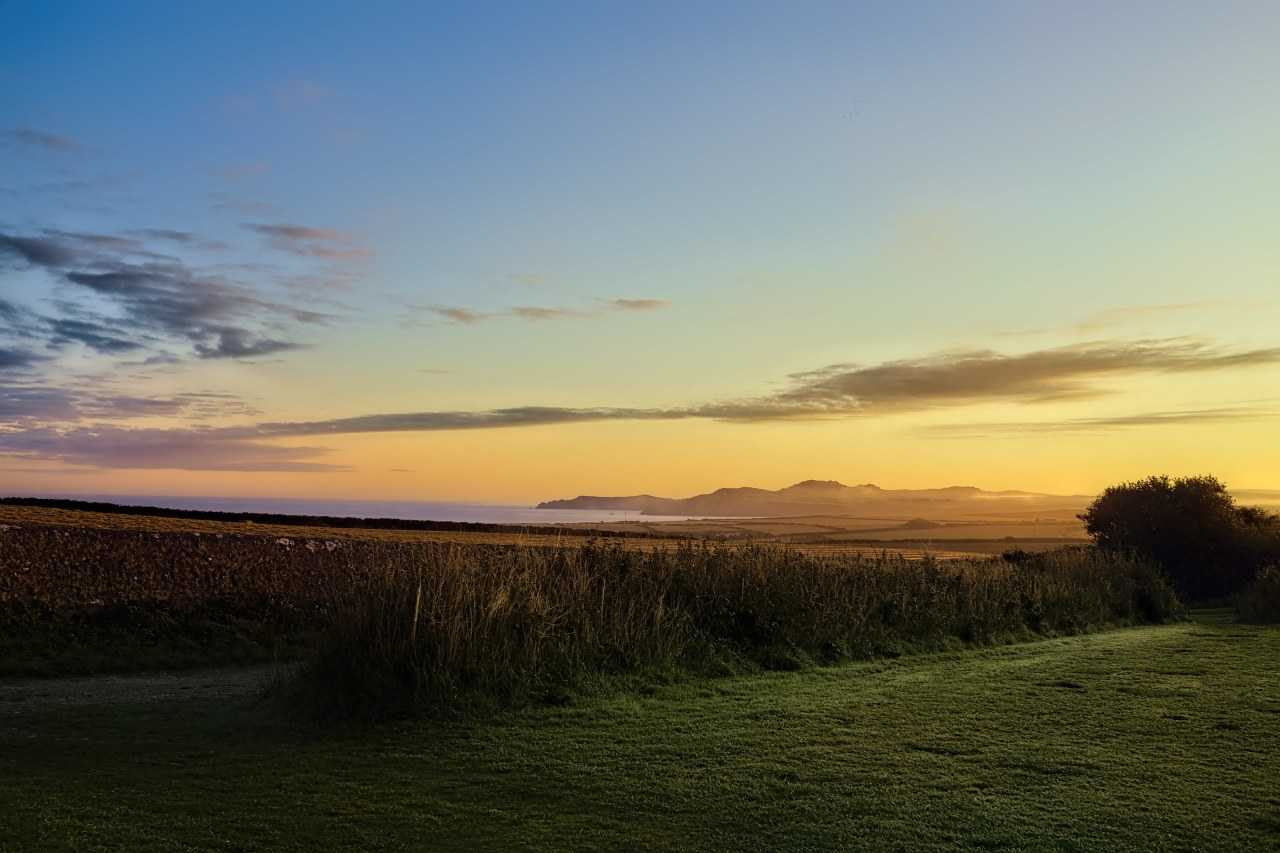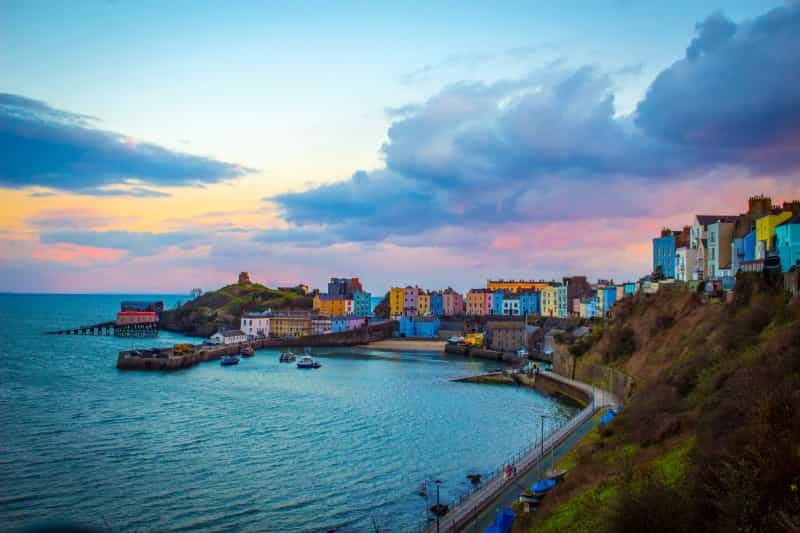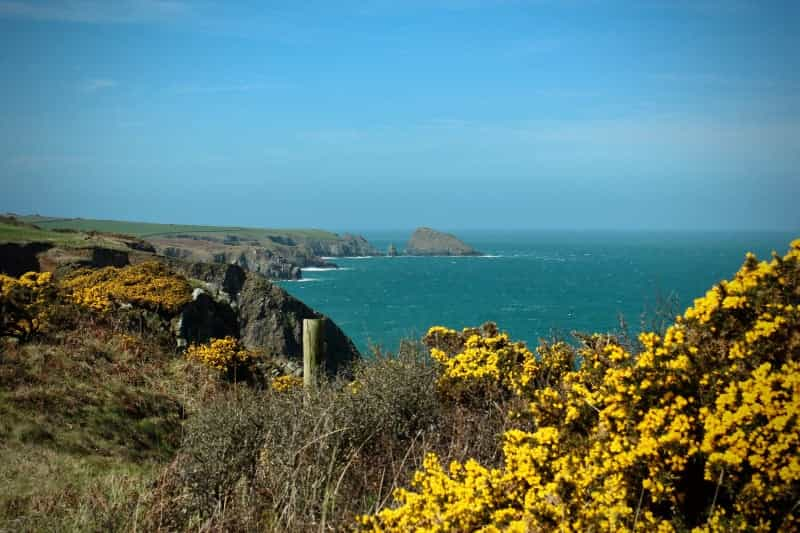Top 5 Attractions on the Pembrokeshire Coast
Thinking about a trip to the Pembrokeshire coast? It’s known for its gorgeous stretches of sandy beaches, rugged cliff tops and interesting variety of wildlife, and it’s a marvellous destination for a family holiday. The county is bordered by Carmarthenshire to the east, Ceredigion to the north-east and the sea on all other sides – so that means plenty of coastline to explore.
Whether you’re exploring Iron Age forts at Castell Henllys and St Davids, relaxing by the shore in Tenby or sauntering along the Pembrokeshire Coast Path, a short break here should have something to impress all visitors.
Sit back, relax and take our tour of the top five attractions in Pembrokeshire, home to some of the most spectacular coastal scenery in Britain…

Walk part of the Pembrokeshire Coast Path National Trail
This incredible 186-mile (299-km) long-distance footpath is one of the most popular and well-loved attractions in the area – and of course visiting it is free. This is a stunning national trail covering almost every type of maritime landscape imaginable – from estuaries and sandstone bays to limestone cliffs and volcanic headlands.
The path opened in 1970, and now both the International Appalachian Trail and the Wales Coast Path follow the route of the Pembrokeshire Coast Path through the county. Starting from St. Dogmaels in the north, the route twists and turns its way along the edge of the dramatic cliff tops of the north coast until it reaches Amroth in the south.
On average, it takes about 10 to 15 days to walk the entire Pembrokeshire coastal path, and the total rise and fall across the whole stretch adds up to an impressive 35,000 feet. Not everyone will want (or be able) to complete this, of course – but there are lots of shorter sections that make really rewarding walks. Plus, you can always jump on one of the coastal buses if and when your legs get tired.
Almost all of the trail is in the Pembrokeshire Coast National Park (Britain’s only coastal national park) so expect to see lots of wildlife and enchanting coastal flowers along the way.
Fancy getting in the water now that you’ve seen the sea? Visit some of the best surfing beaches in Pembrokeshire and catch some waves before leaving the area.

Stroll around St Davids Peninsula
Named after Wales’ patron saint, St Davids is the smallest city in the UK but it has an incredible amount of history and an awesome coastline to explore.
It’s home to the most important religious monument in Wales – St Davids Cathedral – which dates back to the 6th century, making it the most ancient cathedral settlement in Britain. The landmark is open to the public and well worth exploring, so take a look at the website for opening times and the event schedule.
Beyond the city there are a number of public footpaths that cut through the ancient landscape where you can saunter past the ruins of Iron Age forts, a number of defensive banks and awe-inspiring ancient field patterns. The peninsula is particularly pretty during the spring and summer months, when a colourful collection of coastal flowers begin to bloom along the paths and within the stone walls.
With so much to see and do here, you might want to consider booking a few nights at a local campsite to get the most out of your stay.
Check out our guide to the things to do in St Davids before heading home.

Take a tour of Tenby
Tenby is well known as the ‘jewel in the Pembrokeshire crown’ and is one of the most popular tourist destinations in the whole country. The main attractions here are without a doubt the gorgeous sandy beaches. There are four in total – North, Harbour, Castle and South – so you can get your fill of sea and sand without having to travel too far from your campsite.
After a bit of sandcastle-building and paddling in the clear waters, spend a bit of time exploring the ruins of Tenby Castle. The original stone structure was built by the Normans in the 12th century, and today visitors can complete a circular walk following the line of the curtain walls, or go to the museum and art gallery that’s been built on the remains of what is thought to have been the castle’s great hall.
If you’re with the kids, take a trip to the town’s dinosaur-themed park – an adventure playground with over 30 life-sized prehistoric creatures to get up close and personal with. From hurricane cars to disco boats, there’s also a whole range of exciting rides and activities to keep everyone entertained for an afternoon.
Browse our list of the 7 best beaches in Pembrokeshire for some more sand and sea air.
Potter around Pembroke Castle
A trip to this medieval castle in the centre of Pembroke is a must-do when you’re in town – it’s thought to have been the birthplace of Henry VII and underwent extensive restoration in the early part of the 20th century.
The Grade I-listed fortification stands on a rocky limestone headland beside the river, overlooking the surrounding mill pond and fields as well as Milford Haven – a town with a natural harbour that has been in use since the Middle Ages.
After entering the gatehouse arch, visitors can climb the 25-metre-high keep or delve down into Wogan Cavern, one of the castle’s most impressive features – it was a shelter for cave dwellers in the Paleolithic and Mesolithic periods.
Head into one of the main exhibition rooms where you can see sculpted figures and mural paintings depicting the castle’s tumultuous past and find out more about its rich history on one of the free daily guided tours.
Pembroke is a fantastic base from which to explore the rest of the county, so pick out a local campsite for a short break here.

Visit Castell Henllys Iron Age Village
Step back in time for a few hours on a trip to Castell Henllys, a significant archaeological site in the north of Pembrokeshire.
Today, a number of reconstructed thatched Iron Age buildings stand where the original structures would have once existed over 2,000 years ago. Visitors can walk around the impressive roundhouses and be shown around the village by experienced guides who represent members of the Demetae tribe – a group of people who would have once called this place home.
It’s a pleasant place to wander around as there are lots of woodland and riverside paths to follow and you’ll get outstanding views of the surrounding countryside too. Keep an eye out for the odd dormouse scurrying around the ancient land, as well as otters playing in the streams.
The visitor centre here includes a café, gift shop and some interactive exhibitions that the whole family can take part in.
Tempted by a trip to the region? Read Pitchup's Ultimate West Wales Camping Guide to find out all you need to know when planning a stay in Pembrokeshire...